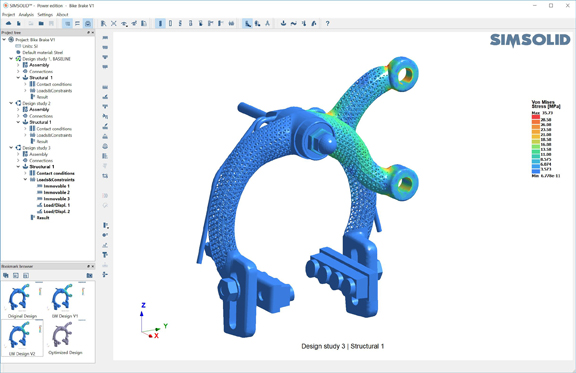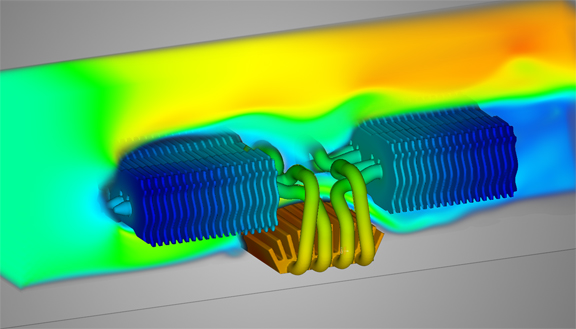The major trends that once seemed like tall tales—cloud-hosted CAD, augmented reality and virtual reality (AR-VR), artificial intelligence (AI), to name but a few—are becoming the norm. The transformation of manufacturing is about to be go into high gear. To get a sense of the scale of changes and surprises, DE contacted some people who have the benefits of hindsight and the gift of foresight.
The Cloud Era
In the early 90s, Jon Hirschtick, cofounder of SolidWorks, changed the course of engineering software with the introduction of Windows-based parametric CAD. The product he and his team developed continues to thrive under Dassault Systemes, which acquired the company in 1997.
Hirschtick left SolidWorks in 2012, but he was evidently not ready to retire. He began his second act by founding Onshape, a purely cloud-hosted CAD program—something many had previously argued was infeasible or impractical.
“2018 will be a time that cloud CAD spreads its wings and demonstrates that it’s really CAD 2.0—an overall better CAD solution across the board in terms of cloud benefits, like no installation, no crashing, collaboration, etc.. In terms of geometric modeling, it’s also Parametrics 2.0, and new generation data management (Goodbye old terrible file-based PDM!) and new generation application platform (great applications for CAM, simulation, rendering, etc. at the fingertips of every user),” Hirschtick hailed.
Coincidental or not, soon after Onshape’s launch, many traditional desktop-centric CAD vendors also began offering some form of cloud-hosted or cloud-straddling products.
For Onshape, the migration toward the cloud, Hirsctick pointed out, “is not just moving the old tools to the cloud though. It’s really taking advantage of the full power of cloud and mobile technology to eliminate all the gridlock of old CAD tools and let modern engineering teams do their best work.”
Just-in-Time Manufacturing
 Stephen Hooper, Autodesk’s senior director of business strategy and marketing for manufacturing (photo courtesy of Autodesk).
Stephen Hooper, Autodesk’s senior director of business strategy and marketing for manufacturing (photo courtesy of Autodesk).Stephen Hooper, Autodesk’s senior director of business strategy and marketing for manufacturing, foresees ubiquitous connectivity irreversibly changing the nature of manufacturing.
“Manufacturing supply chains will diversify to highly flexible distributed supply networks due to connective technologies,” he said, “As a result we’ll see new IT vendors emerge with a greater focus on open technology platforms that place a greater emphasis on connectivity between organizations rather than within them. Manufacturing at the point of demand will become a reality as printing technology accelerates and manufacturers realize the flexibility of shipping raw material versus finished products.”
Similarly, Hirschtick noted, “Online manufacturing is going to grow dramatically. Not only 3D printing but also machining and other forms of fabrication will increasingly be sourced and collaborated on over the internet.”
In the last few years, vendor-designer matchmaking sites like Fictiv and Xometry emerged to connect those seeking manufacturing services and those who can provide them. The range of services in the these networks cover 3D printing, casting, sheet metal production, CNC machining, injection molding, and post-processing.
With an online ordering system and CAD plug-ins, individual vendors like Plethora also began to connect directly with the design community. Their target is usually small design shops and project teams with the need for low volume manufacturing (sometimes as low as one unit)—the segment underserved by larger manufacturers that cater to high-volume, mass-production orders.
It’s a piece of the pie that have also attracted the attention of design software giants. In this year’s SolidWorks World user conference (SWW18), Dassault Systemes signaled its interest in the space with the launch of 3DXPERIENCE Marketplace Make, a portal for requesting and ordering on-demand manufacturing services.
Soon, there could be a race among all the big players to become the Amazon of on-demand manufacturing.
The Fusion of Design and Manufacturing
Hooper said, “The processes of design and manufacturing will converge as new manufacturing technologies dictate different approaches to designs that are too complex for human being to perform alone.”
Design and manufacturing, though related, functioned independently in the past. However, as the adoption of topology optimization software increases, the design geometry gets more complex. Lightweight features such as lattice-filled parts and honeycomb structures are impossible to be manually modeled. Nor can they easily be produced in traditional manufacturing methods. The development suggests the two independent disciplines—design and manufacturing—must work closer together to seek the right design and production strategies.
In Hirschtick’s view, “Generative design and shape optimization will also continue to grow, not only for 3D printing but also for milling and other forms of manufacturing.”
Simulation Advances
 SIMSOLID calls its technology meshless simulation, indicating you can bypass one of the stumbling blocks in ease of use (image courtesy of SIMSOLID).
SIMSOLID calls its technology meshless simulation, indicating you can bypass one of the stumbling blocks in ease of use (image courtesy of SIMSOLID). ANSYS Discovery Live takes advantage of NVIDIA GPUs to enable real-time visualization (image courtesy of ANSYS).
ANSYS Discovery Live takes advantage of NVIDIA GPUs to enable real-time visualization (image courtesy of ANSYS).The movement to make simulation more accessible to designers has had limited success, but the watershed moment may be finally here.
Hirschtick noted, “Simulation is seeing some real breakthroughs that will make it dramatically easier and more frequently used. Two great examples of trends: (1) Meshless simulation, courtesy of SIMSOLID—absolutely amazing to see complex simulation problems done with NO meshing—really incredible. (2) Real-time simulation from ANSYS Discovery Live—another amazing capability to see results in real-time.”
Meshless simulation is championed by SIMSOLID, a partner of Onshape. Its founder Ken Welch, a veteran of the simulation industry, said, “The bottom line is that these CAD-to-Mesh steps require many judgement calls, are labor-intensive, error prone and require experts in both simulation and CAD. The result is that simulation today is limited to large companies with complex and expensive workflows ... Our goal at SIMSOLID is to change all that. We are pioneering new methods that work directly on fully featured CAD assemblies and do not create a mesh.”
ANSYS recently launched ANSYS Discovery Live, which harvests NVIDIA GPUs’ parallel processing power to enable real-time visualization of simulation. It also employs a much simpler interface, aimed to remove many of the complex choices that tend to stump designers.
About the Author
Follow Robotics 24/7 on Linkedin
Article topics
Email Sign Up

















